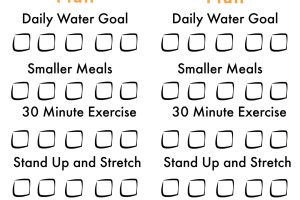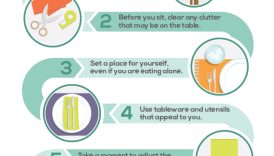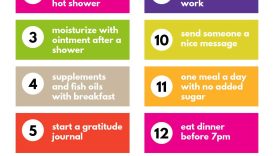Unlocking the Potential of a Customized Healthy Lifestyle Plan

Understanding the Importance of Personalized Health Plans
In today’s fast-paced world, a one-size-fits-all approach to health simply doesn’t cut it. Each individual possesses unique genetic makeups, lifestyles, and health conditions; this underscores the necessity of personalized health plans. These plans not only consider dietary restrictions and fitness levels but also take into account motivation, time availability, and personal goals. For instance, imagine someone aspiring to run a marathon. They would require a vastly different plan than someone whose goal is to manage diabetes or to lose weight. Tailoring an approach means the strategies are relevant, achievable, and can lead to sustainable results. A personal health plan enables:
- Unlocking the Potential of a Customized Healthy Lifestyle Plan
- Understanding the Importance of Personalized Health Plans
- Benefits of Following a Customized Healthy Lifestyle
- Assessing Your Health Needs
- Evaluating Your Current Health and Fitness Levels
- Identifying Your Health Goals and Objectives
- Designing Your Personalized Nutrition Plan
- Nutritional Assessment and Analysis
- Tailoring a Balanced Diet to Meet Your Needs
- Implementing an Effective Exercise Routine
- Customizing a Fitness Program for Optimal Results
- Incorporating Physical Activity into Your Daily Life
- Monitoring Progress and Making Adjustments
- Tracking Your Health Metrics and Performance
- Modifying Your Plan for Long-Term Success
- Customized Dietary Recommendations: Understanding what foods work best for individual digestive systems, nutrient absorption, and calorie needs.
- Individualized Fitness Routines: Tailoring workouts that fit one’s lifestyle and physical capabilities, enhancing motivation, and reducing the risk of injury.
Moreover, such plans foster a stronger commitment to health objectives by aligning them with personal values and circumstances.
Benefits of Following a Customized Healthy Lifestyle
Adopting a personalized health plan can lead to a series of life-changing benefits. First and foremost, it promotes better physical well-being. Individuals often experience:
- Enhanced Energy Levels: By consuming the right nutrients, one can feel more vibrant and motivated throughout the day.
- Improved Mental Health: Engaging in suitable physical activities can release endorphins, helping to alleviate anxiety and depression.
- Greater Adherence to Goals: When health plans resonate with one’s lifestyle, they become easier to follow, leading to long-term adherence.
Consider Sarah, who transitioned to a personalized nutrition plan. After tracking her dietary habits and energy levels, she discovered that incorporating more whole grains and vegetables made her feel more energized. Consequently, she maintained her fitness routine and was able to enjoy life more. Personalized health plans create a unique pathway tailored not just to physical results but to overall life satisfaction. The journey toward health isn’t merely about the destination; it’s about finding joy and balance along the way.
Assessing Your Health Needs
Evaluating Your Current Health and Fitness Levels
Before diving into a personalized health plan, it’s essential to evaluate where you currently stand health-wise. Understanding one’s health and fitness levels forms the foundation of any successful journey towards better health. Start with a self-assessment. Here are some aspects to consider:
- Body Composition: Measure weight, body mass index (BMI), and body fat percentage if possible. These figures provide insights into whether you’re in a healthy weight range or might need adjustments.
- Physical Fitness:Reflect on your current fitness routine. How often do you exercise? What type of activities do you engage in? Consider:
- Cardiovascular Health: Test your endurance with a simple walk or jog.
- Strength Levels: Assess how many push-ups or sit-ups you can do in one minute.
- Flexibility: Check your range of motion with basic stretches.
For instance, John realized during his self-assessment that he struggled to climb stairs without getting winded. This prompted him to prioritize building endurance, laying the groundwork for his fitness goals.
Identifying Your Health Goals and Objectives
Once you have a clear understanding of your current health and fitness levels, it’s time to set goals that align with your aspirations. Effective goal setting involves both specificity and realism; that way, you’ll know precisely what to focus on. Ask yourself:
- What is my primary health objective? Whether it’s weight loss, muscle gain, or improving mental well-being, clarity is key.
- What actions will lead to these changes?Consider breaking down your goals into smaller, actionable steps:
- If your goal is to lose 10 pounds, start by setting a target to lose one pound a week.
- If you want to run a 5K, aim to walk briskly for 20 minutes daily before gradually introducing running intervals.
Think about Sarah again; after realizing that she wanted to manage her stress and improve her nutrition, she set small achievable goals: adding one extra serving of vegetables a day and committing to 30 minutes of yoga each evening. By evaluating your current health status and setting specific, actionable goals, you create a roadmap for success. This personalized plan propels you toward achieving your health aspirations with clarity and purpose, making the journey not only effective but fulfilling.
Designing Your Personalized Nutrition Plan
Nutritional Assessment and Analysis
With a clear understanding of your health needs and goals, the next step in your journey is to design a personalized nutrition plan. The first phase of this process involves conducting a nutritional assessment and analysis. This step is crucial, as it allows you to identify what your body truly needs to thrive. Start by keeping a food diary for a week. Document everything you eat and drink, paying attention to portion sizes. This can reveal patterns or deficiencies you might not have otherwise noticed. Additionally, consider these factors:
- Macronutrients: Analyze your intake of carbohydrates, proteins, and fats. Are you getting a balanced mix, or is one significantly higher than the others?
- Micronutrients: Check for essential vitamins and minerals. Use a nutrition app or consult a registered dietitian to help categorize your intake.
For instance, Maria dedicated a week to journaling her meals. Through this exercise, she discovered her protein intake was alarmingly low, primarily due to her vegetarian lifestyle. This revelation prompted her to explore new sources of protein, marking a pivotal moment in her nutritional journey.
Tailoring a Balanced Diet to Meet Your Needs
Now that you have performed a comprehensive nutritional assessment, it’s time to design a balanced diet that caters specifically to your needs and goals. This will not only enhance your energy levels but also ensure your body receives adequate nutrients. Here’s how to approach it:
- Prioritize Whole Foods: Incorporate fruits, vegetables, whole grains, lean proteins, and healthy fats. Aim for a colorful plate to maximize nutrient diversity.
- Meal Planning:Develop a weekly meal plan that aligns with your goals. For example:
- Breakfast: Overnight oats with nuts and fresh fruit.
- Lunch: Quinoa salad with chickpeas and a variety of colorful veggies.
- Dinner: Grilled salmon with steamed broccoli and sweet potatoes.
- Listen to Your Body: Pay attention to hunger cues and energy levels throughout the day. Adjust meal portions or snack frequency as needed.
Consider Mike, who switched to a tailored balanced diet focused on integrating nutrient-dense foods. He learned to prep meals during the weekend to minimize last-minute unhealthy choices, leading to significant improvements in his energy and mood. Creating a personalized nutrition plan rooted in a thorough nutritional assessment will help you achieve your health objectives while fostering lifelong healthy habits. In the next section, we will explore how to implement an effective exercise routine that complements your nutritional efforts seamlessly.
Implementing an Effective Exercise Routine
Customizing a Fitness Program for Optimal Results
Now that you have established a solid nutrition plan, it’s time to complement it with an effective exercise routine. Customizing a fitness program that aligns with your personal goals and preferences is crucial for achieving optimal results and maintaining motivation. Start by determining your fitness level and the type of exercise you enjoy. Here are a few key considerations:
- Strength Training vs. Cardio: Decide how much time you want to dedicate to weight training compared to cardiovascular exercises. Balance is key—both elements work together to enhance overall fitness.
- Frequency and Duration: Aim for at least 150 minutes of moderate aerobic exercise or 75 minutes of vigorous activity each week, along with muscle-strengthening activities on two or more days.
- Types of Workouts:Consider mixing various exercises to keep your program engaging. Options include:
- High-Intensity Interval Training (HIIT)
- Yoga or Pilates for flexibility and mindfulness
- Outdoor activities like hiking or cycling
Sarah, for example, found that incorporating dance classes into her fitness regimen enjoyedably boosted her cardiovascular health. Mixing familiar workouts with new activities kept her excited and committed, yielding impressive results.
Incorporating Physical Activity into Your Daily Life
An effective exercise routine isn’t just limited to structured workout sessions; it’s about integrating physical activity into your daily life. Here’s how to seamlessly incorporate movement throughout your day:
- Active Commuting: Consider walking or biking to work instead of driving. If public transport is your primary mode, get off a stop earlier and walk.
- Technology for Motivation: Utilize fitness apps or wearable trackers to monitor your progress and set daily activity goals, such as hitting 10,000 steps.
- Stair Climbing: Opt for stairs over elevators whenever possible. It’s a simple way to build strength and cardiovascular fitness.
Tom, a busy professional, transformed his routine by scheduling active breaks during his workday. He began taking short walks every hour and doing quick strength exercises between meetings, which significantly boosted his energy and productivity. By customizing a fitness program that resonates with you and finding creative ways to incorporate exercise into your daily life, you’re setting yourself up for success. Physical activity not only supports your nutritional goals but also enhances your overall well-being. With a holistic approach in place, the next step is to monitor your progress and make adjustments as necessary for long-term success.
Monitoring Progress and Making Adjustments
Tracking Your Health Metrics and Performance
As you embark on your journey towards a healthier lifestyle, monitoring progress becomes essential to ensure that your efforts are effective. Keeping a close eye on your health metrics and performance not only provides motivation but also helps identify areas that may need enhancement. Start by establishing specific metrics to track. Here are some important indicators to consider:
- Weight and Body Measurements: Regularly recording your weight and measurements (like waist and hip circumference) can demonstrate shifts in body composition.
- Fitness Progress: Track improvements in strength—such as the weights you lift—or endurance, like how long you can maintain a cardio exercise without fatigue.
- Energy Levels: Note how your energy fluctuates throughout the day. Keep a journal to correlate your food and exercise with your energy levels.
For example, Lisa maintained a weekly log of her workouts and dietary habits. Over time, she noticed that her energy spiked on days she included more complex carbohydrates in her meals, leading her to make mindful choices about what she ate pre-workout.
Modifying Your Plan for Long-Term Success
Regularly reviewing your progress brings the critical opportunity to modify your plan for sustained success. Flexibility is a key element in any personalized health journey; as your body adapts, your needs may change. Consider these strategies for modification:
- Set New Goals: As you achieve initial goals, set new, challenging ones to keep pushing your boundaries. For instance, if your first aim was to run a 5K, consider training for a half-marathon.
- Adjust Exercise Regimens: If you find your workouts becoming monotonous, try switching the type of exercise or varying the intensity. Incorporate new classes, sports, or outdoor activities to keep things fresh.
- Fine-tune Nutrition: Reassess your nutritional needs periodically. If you find yourself plateauing, reconsider your macronutrient ratios or try new recipes to enhance variety.
Take Jake’s journey, for instance. After consistently losing weight, he realized he had hit a plateau. By diversifying his workouts and changing his calorie intake slightly, he reignited his progress and continued working towards his goals. In conclusion, tracking your health metrics and making necessary adjustments empower you to stay engaged and motivated. Embrace the journey with an open mind; the ability to adapt and refine your approach is crucial in achieving and maintaining long-term health success. As you celebrate your milestones, remember that the journey is just as important as the destination.





